It’s hard to see a storm coming when you’re in the forest, nestled in the trees, no horizon in sight. In fact, hardly any sky in sight. It’s a different story when the flatland prairie stretches in all directions, and the sky is big, open, and expressive. I lived on the prairie when I was hit by a metaphoric storm—it turned out to be a tornado, in fact. It picked me up out of my ordinary life, spun me around and around until I didn’t know which side was up or if I would even survive it. I didn’t see it coming. I didn’t see it coming because I was surrounded by ‘tall trees’ of ordinary life—three children in three different schools and their activities; graduate school with classes, research, animal caretaking and data-gathering, tests, and writing; church goings-on; family fun and responsibilities. Those details of life kept my eyes directly on what was in front of me—no time for sky-gazing or soul-searching. Looking back now, it was that swirl of activity that helped perpetuate the storm, not just my blindness towards some outside force moving in from the horizon to bowl me over, though there was that, too.
Elevation helps a person see the storm coming when you’ve been in the trees. It lifts you above the interesting, compelling details right in front of you. It helps you see a little farther, a little further.
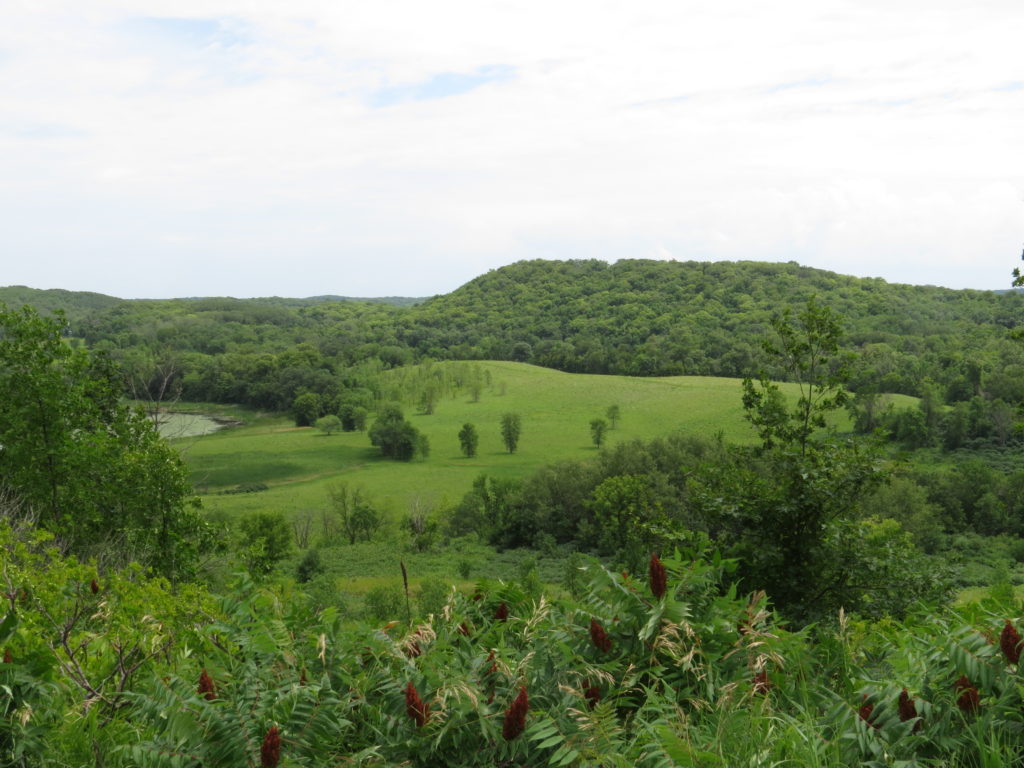
I can definitely get bogged down in the details—I love them. They are so darned interesting. Look at these papery seedpods of the Ironwood tree. They look like hops, which is why the other name for the tree is American Hop Hornbeam! The highly serrated leaves are similar to Birches, but they do not turn brilliant yellow in the fall like the Birches do. They grow extremely slow, thus making the wood very hard—ironwood.

And look at these Wild Rose hips or fruits forming after the pink petals fall from the flowers. They will turn a bright red color and develop sweetness as Autumn comes, especially after a frost. They are one of the highest plant sources of Vitamin C and contain antioxidants that make them a desirable food for humans, birds, and other animals. Wait…what? There’s a storm coming?!
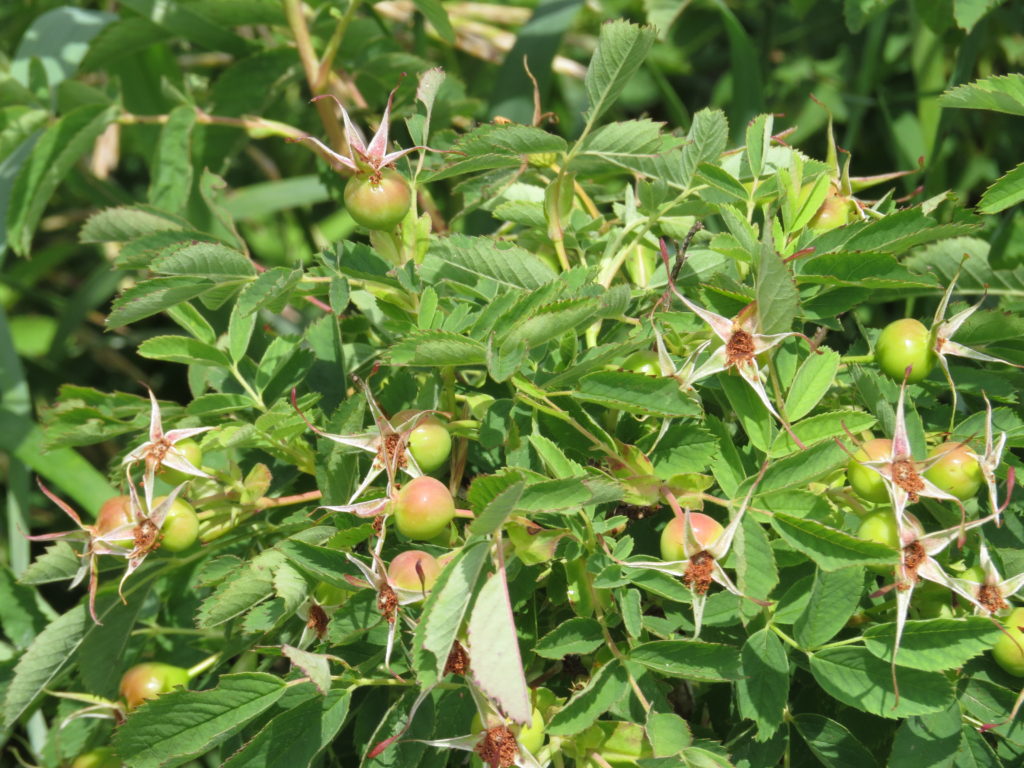
Perhaps the greatest skill is being able to examine and interact with what is happening close to you—whoa, look at that Mullein flower—and being able to check in with the bigger picture—the prairie meadow is beautiful at this time of year, and the Maple Leaf hills must be spectacular in the Fall! Near and far. Present and future.
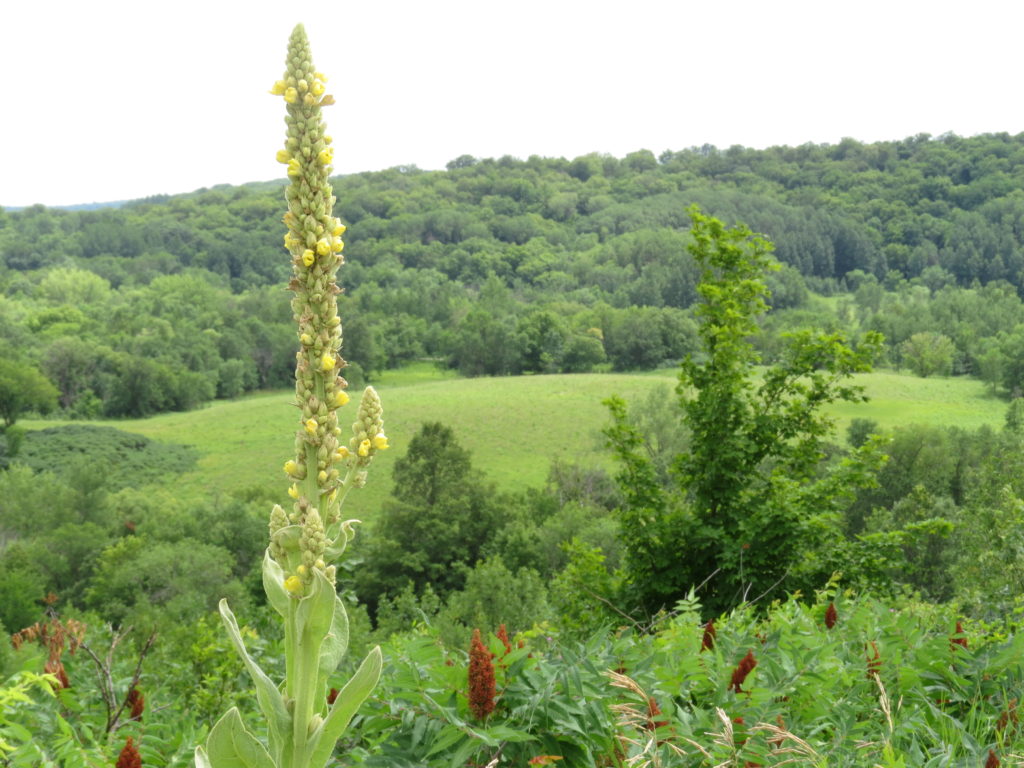
It also matters which direction you are looking…. During our hike up Hallaway Hill at Maplewood State Park, we were facing west, so we noticed the storm clouds building.
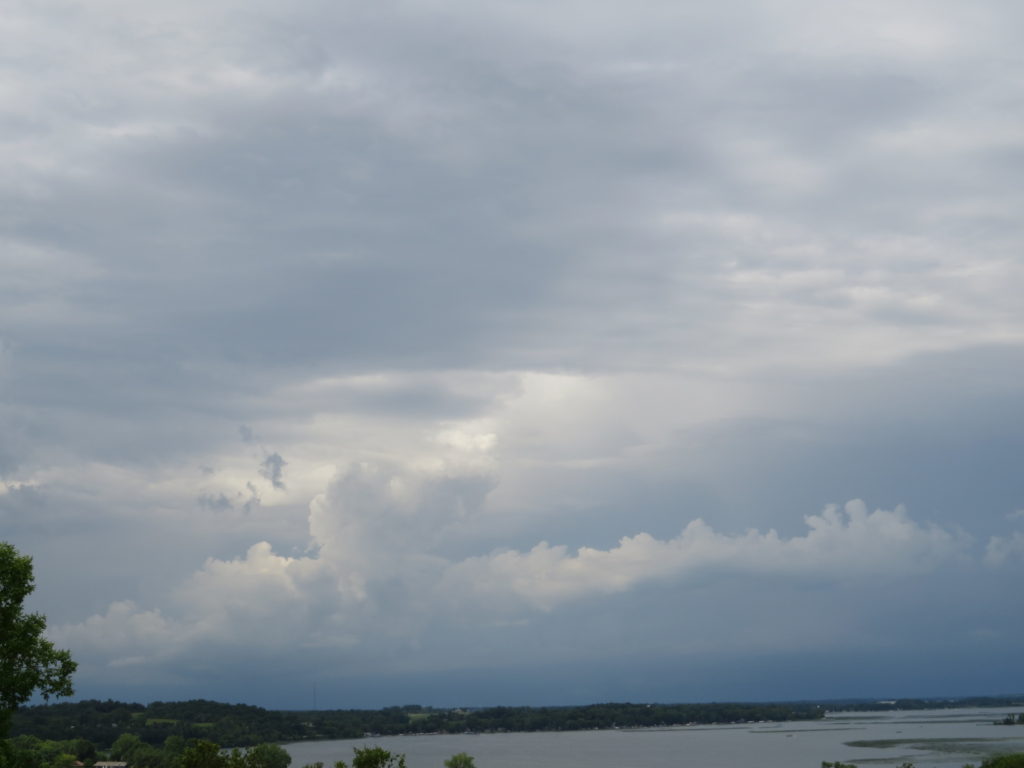
Did you know you can make a lemonade-like drink from the red berries of Staghorn Sumacs? Did you know you can eat the leaves and seeds of Broadleaf Plantains, either raw or cooked?
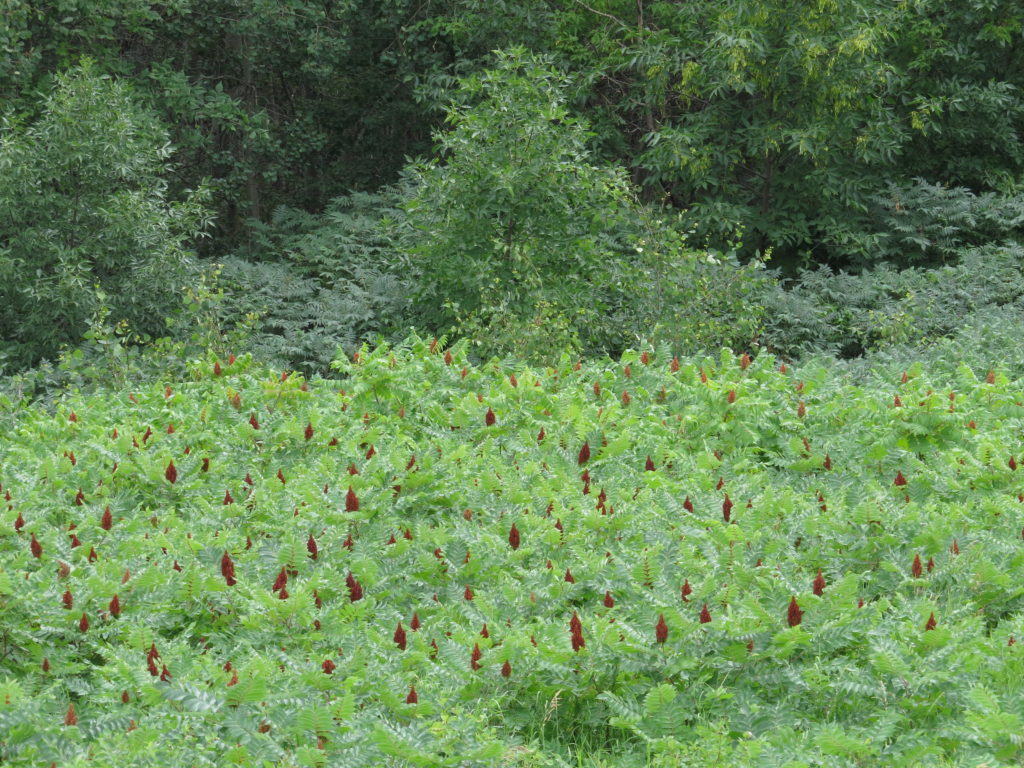
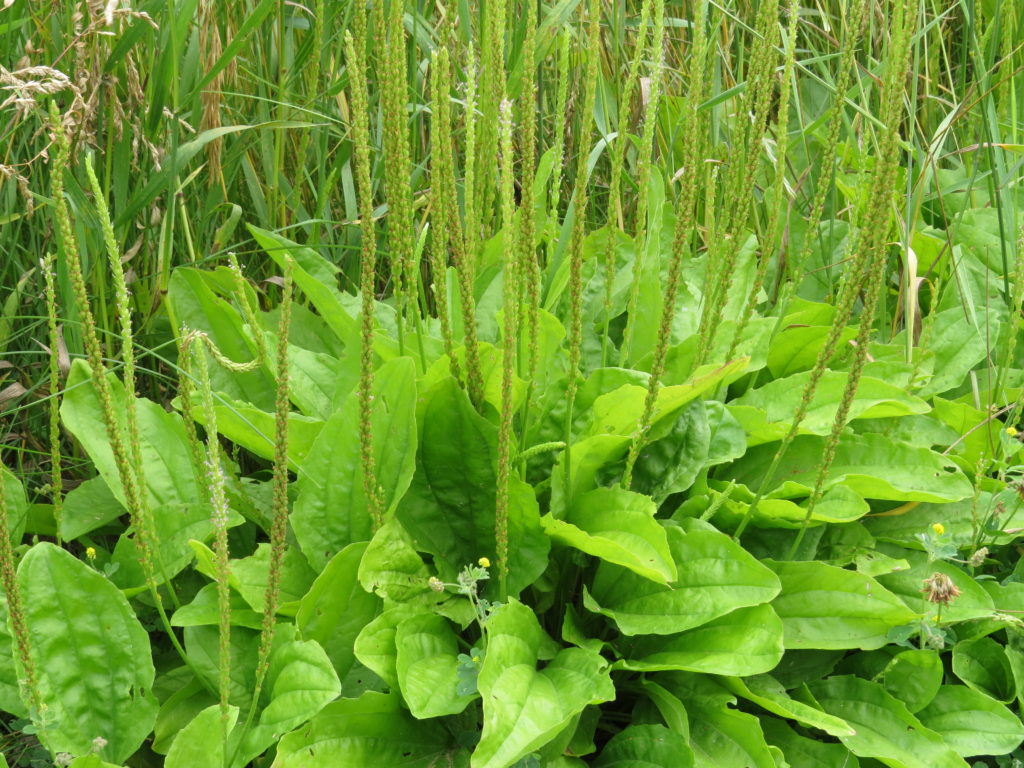
We finished our Hill hike, sensing that it would be our last hike of the day given the storm clouds, then we drove the five-mile Park Drive. It was a gravel/packed dirt road past a small campground and boat launch, then continued on a narrower, one-way trail. We stopped at a wildlife observation hut on Beaver Lake—no wildlife to be seen at that moment.
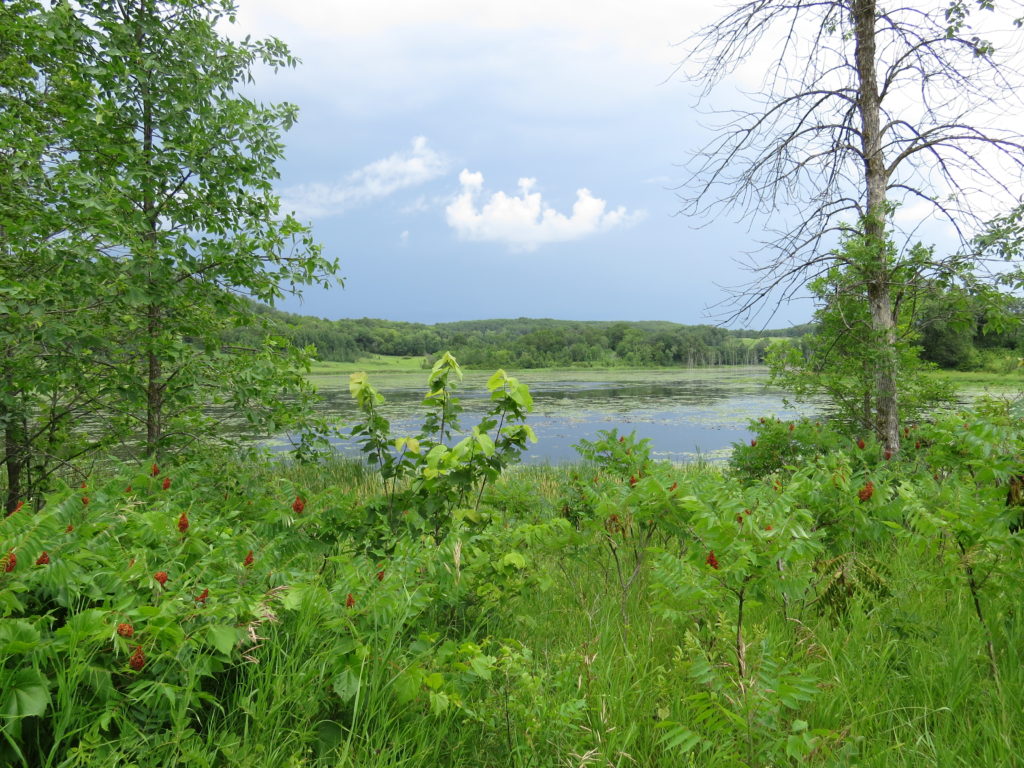
Farther down the road we saw a mama deer with her two spotted fawns who leapt away when they saw us.
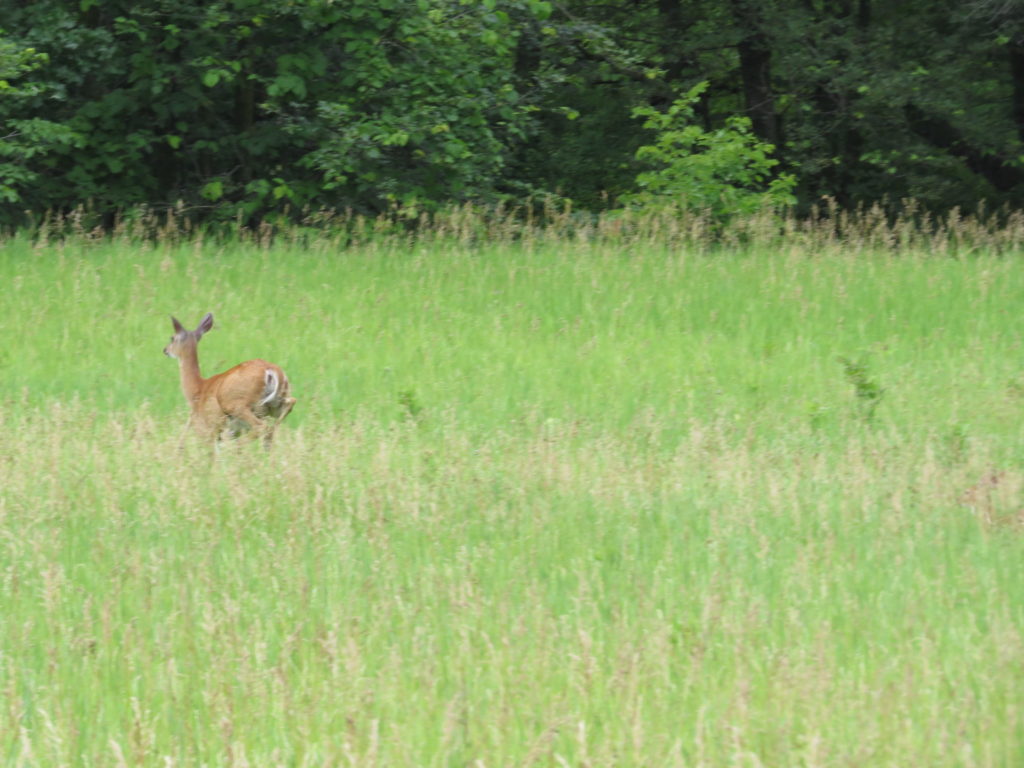
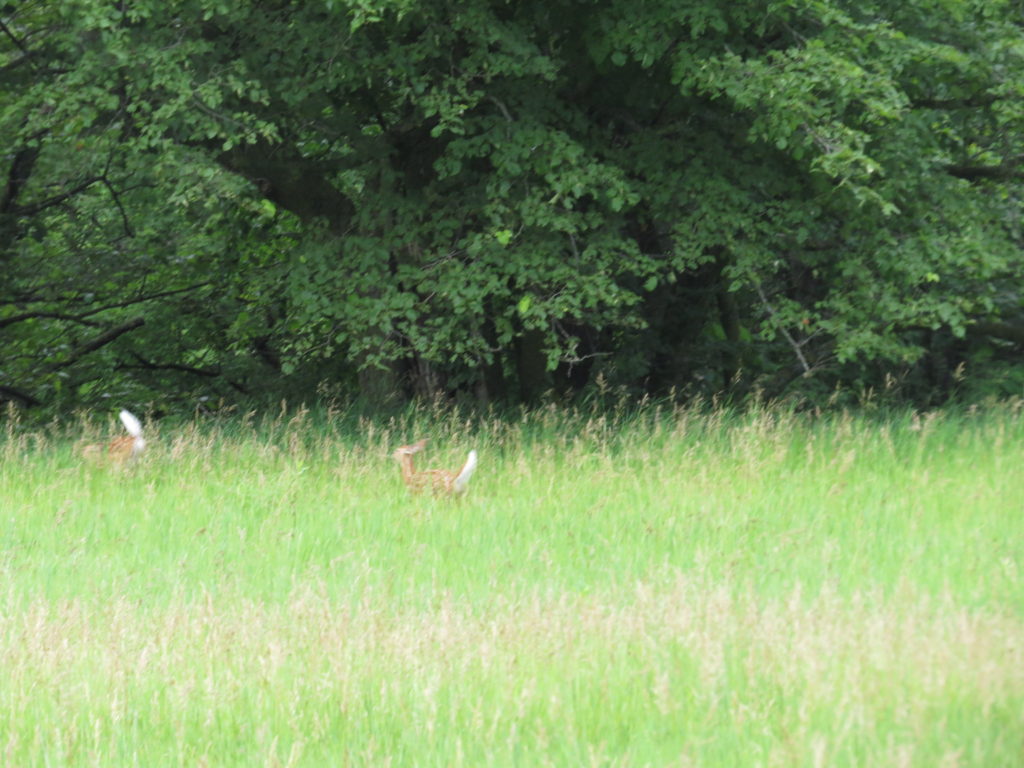
On a hill overlooking Field Lake, we saw the sky getting darker and the clouds beginning to envelop the park. They were no longer on the horizon—the storm was imminent. A restored prairie on the banks of Field Lake had Leadplants in full bloom and Purple and White Prairie Clovers, their colors rich and vibrant with the darkening sky.
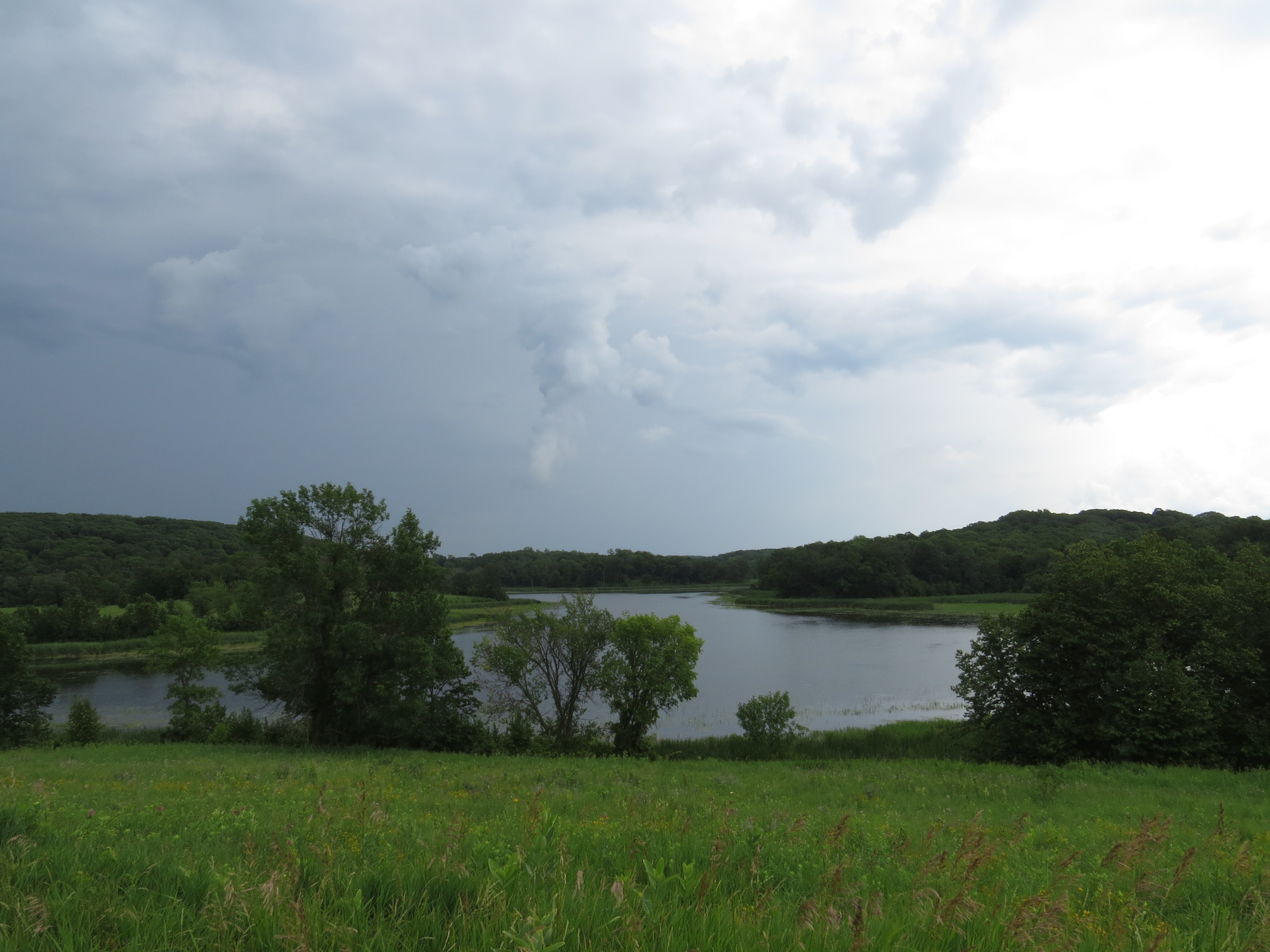
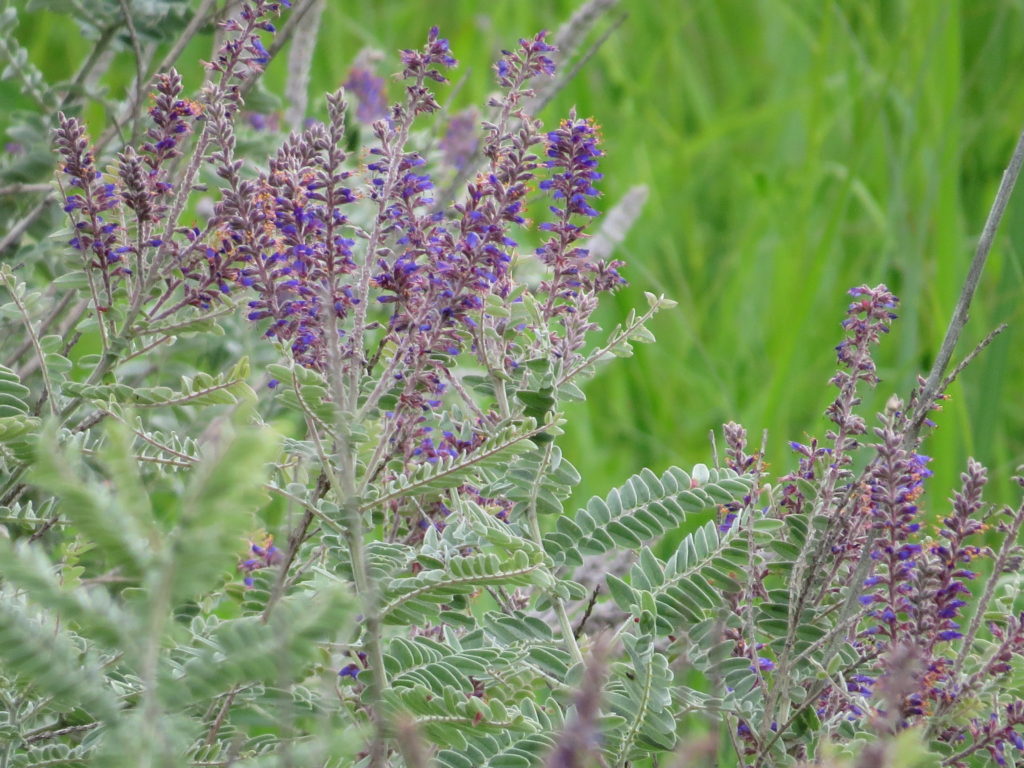
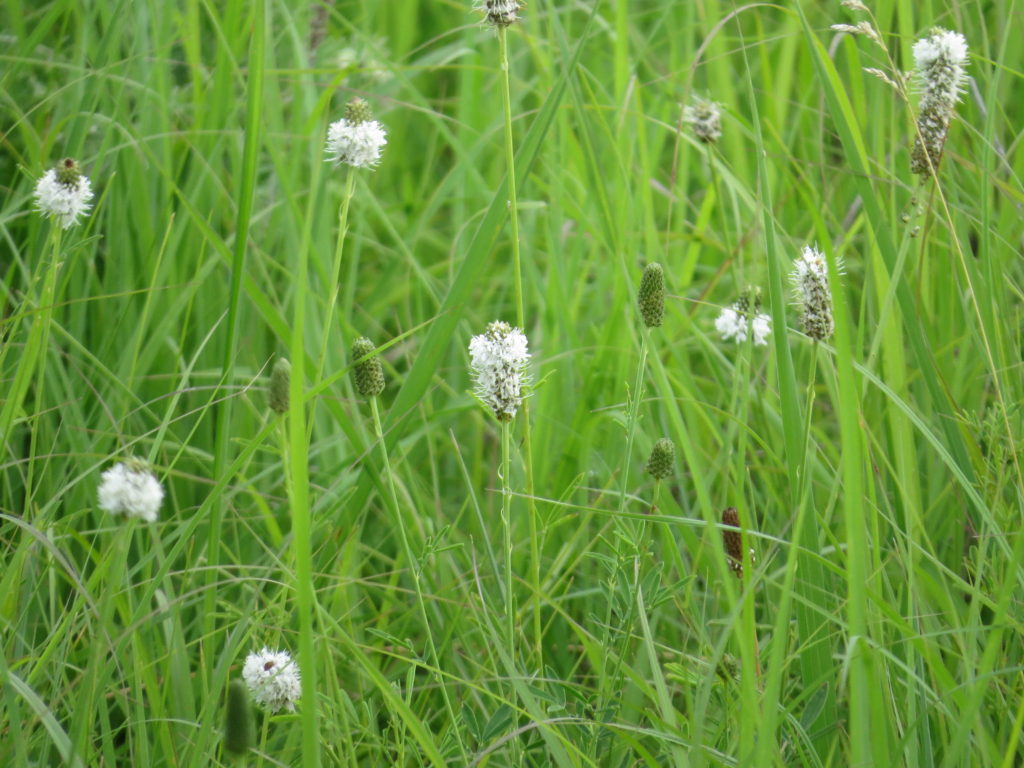
As we wound through the Maple forest on the rutted road, we were hoping to beat the rain. I knew by the map we were close to the end of the one-way road when we passed Cataract Lake. It looked like late evening instead of three in the afternoon—time through a cloudy lens or perhaps in a different realm.
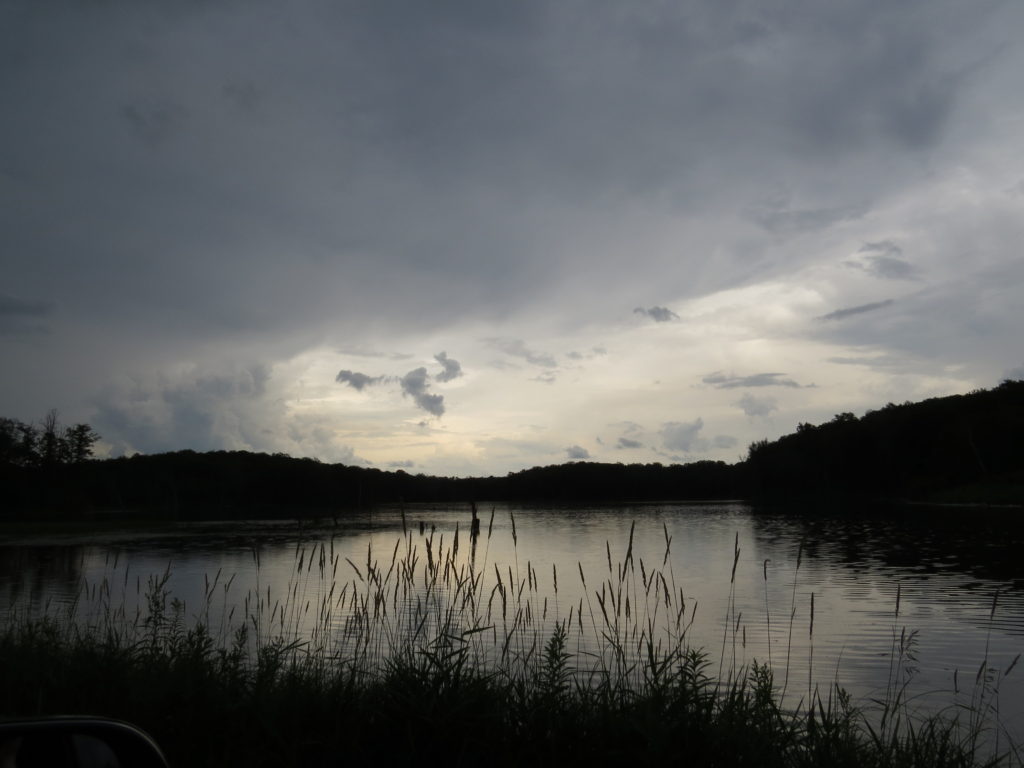
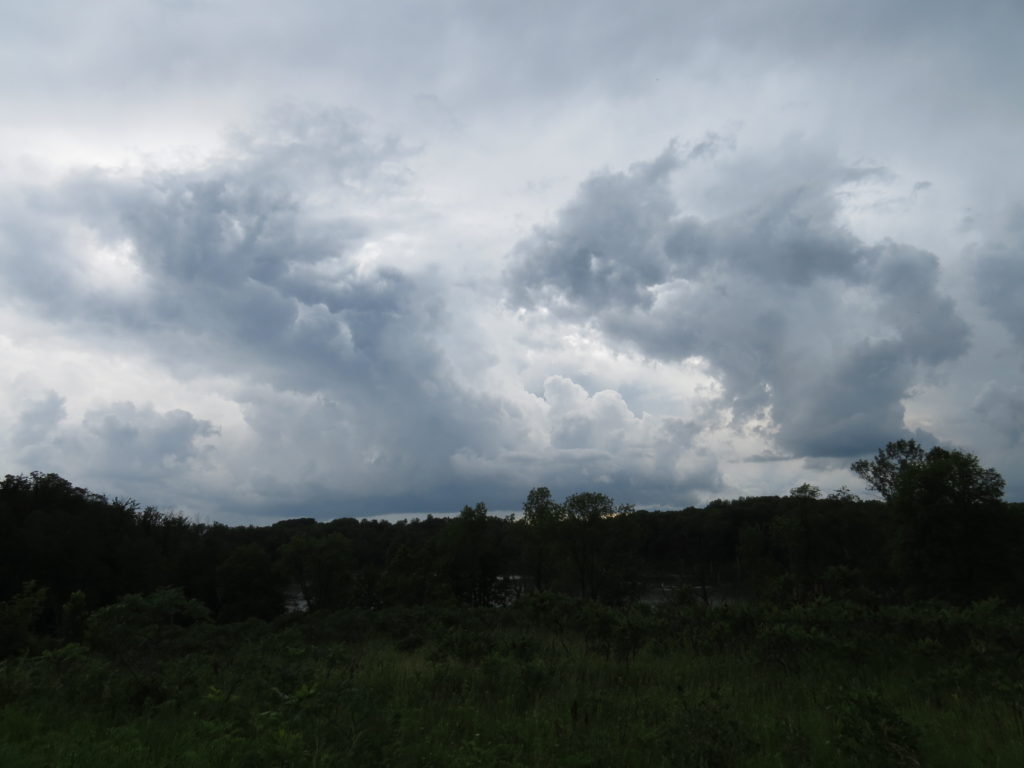
We drove to see the other big lake of the Park—Beers Lake—and the campground by it. Rumbles of thunder and sprinkles of rain began to reach our ears and the windshield. A small pond by the road had a family of ducks swimming happily in the ripples and bubbles of the rainy water.
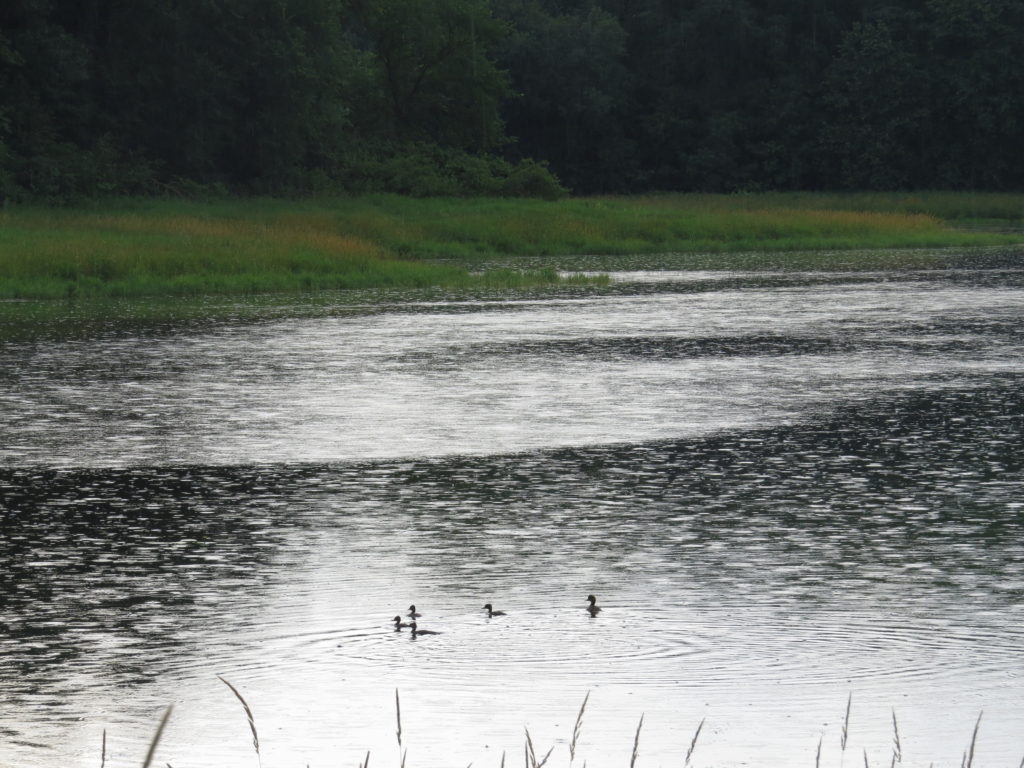

When we reached the end of the road at Beers Lake, there was one family still fishing on the pier and a lone Loon swimming and diving nearby. It wasn’t so dark anymore, and the roiling storm clouds had morphed into a consistent palette of gray from which the rain fell in a steady cadence. The ‘big storm’ part must have passed to the south of us. We drove back to the Trail Center, a small building with tables and chairs, maps and safety equipment. We ate our picnic dinner there as the rain fell.
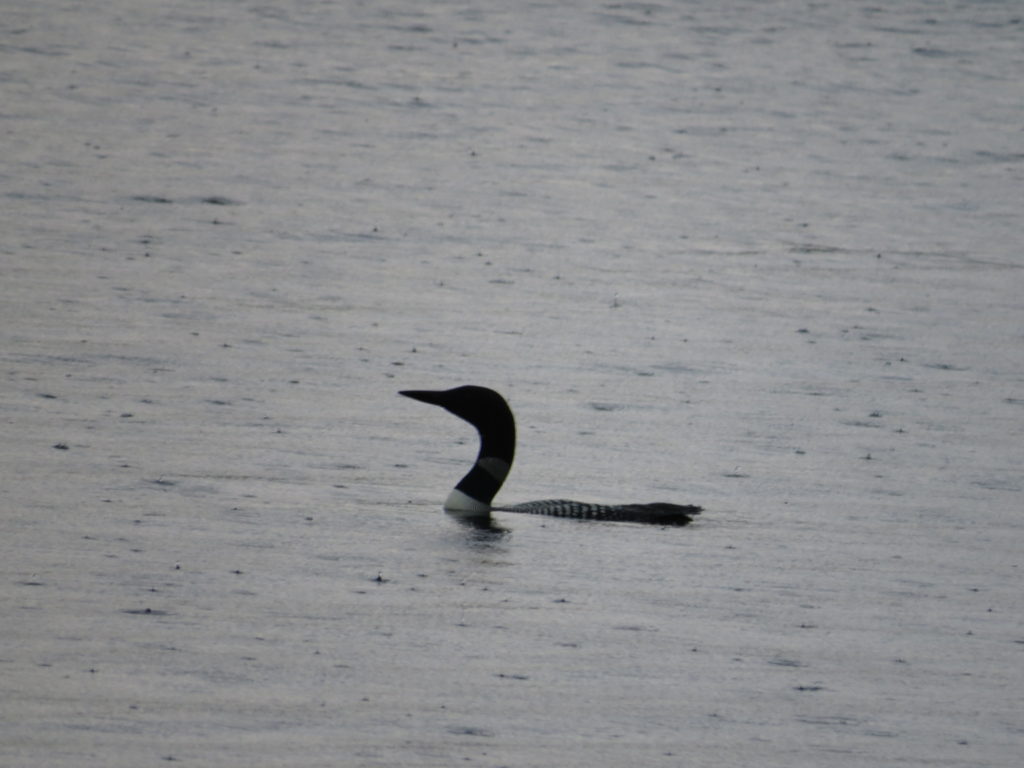
With elevation and open prairie, we could easily see the storm clouds coming towards us. When we were driving through the Maple forest, all we could see was the darkness falling on the afternoon light. It’s shocking when we don’t see the storm clouds of life coming towards us. Sometimes there is no warning, even if we are scanning the horizon. All of a sudden we’re in the dark, not knowing, not prepared, not able to get our bearings. Other times, we see the billowing signs of an impending storm but ignore them. And still we get hit hard. When we notice the storm coming and believe it, we can make different choices, we can plan for the future, and we can ready ourselves, both physically and mentally. Like Dorothy, I landed in Oz after being swept up in the tornado—in this surreal place of bad and good, fantasy and reality, past and present. The land of Oz was my own brain and heart and being that I explored with the help of my guide and lots of courage. It took a while—for time is often warped in the midst of a storm—but I finally found the home of my-Self. It’s a place where I can do sky gazing and soul searching and immerse myself in the sweet details of life. There’s no place like it, you know.
That was very eloquently written. It takes me there. I can see it all. Very nicely done.
Thanks so much, Kay. It was a beautiful place.
This was both lovely and courageous. It’s not easy to talk about the storms. Thanks for your willingness to write about yours.